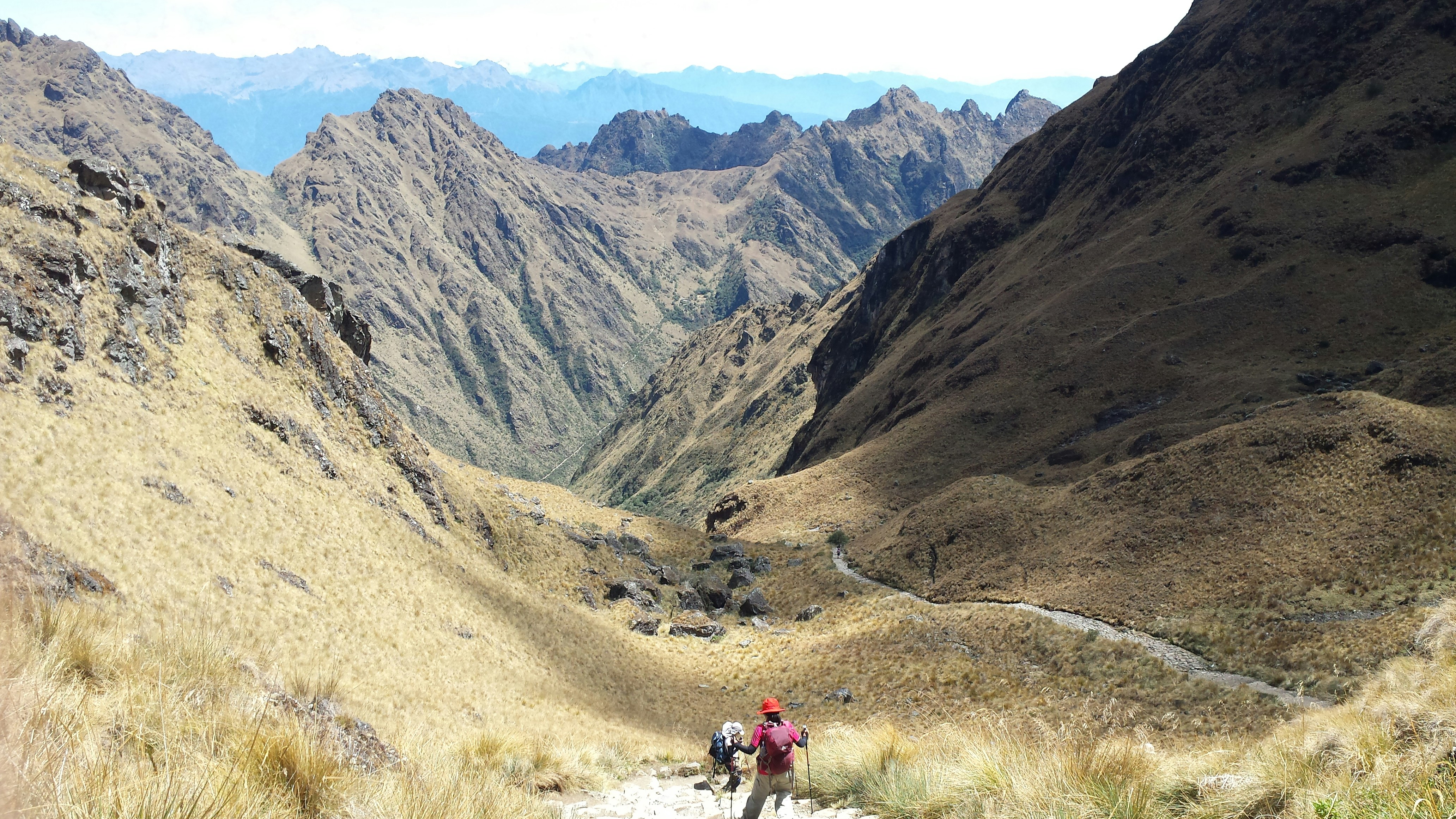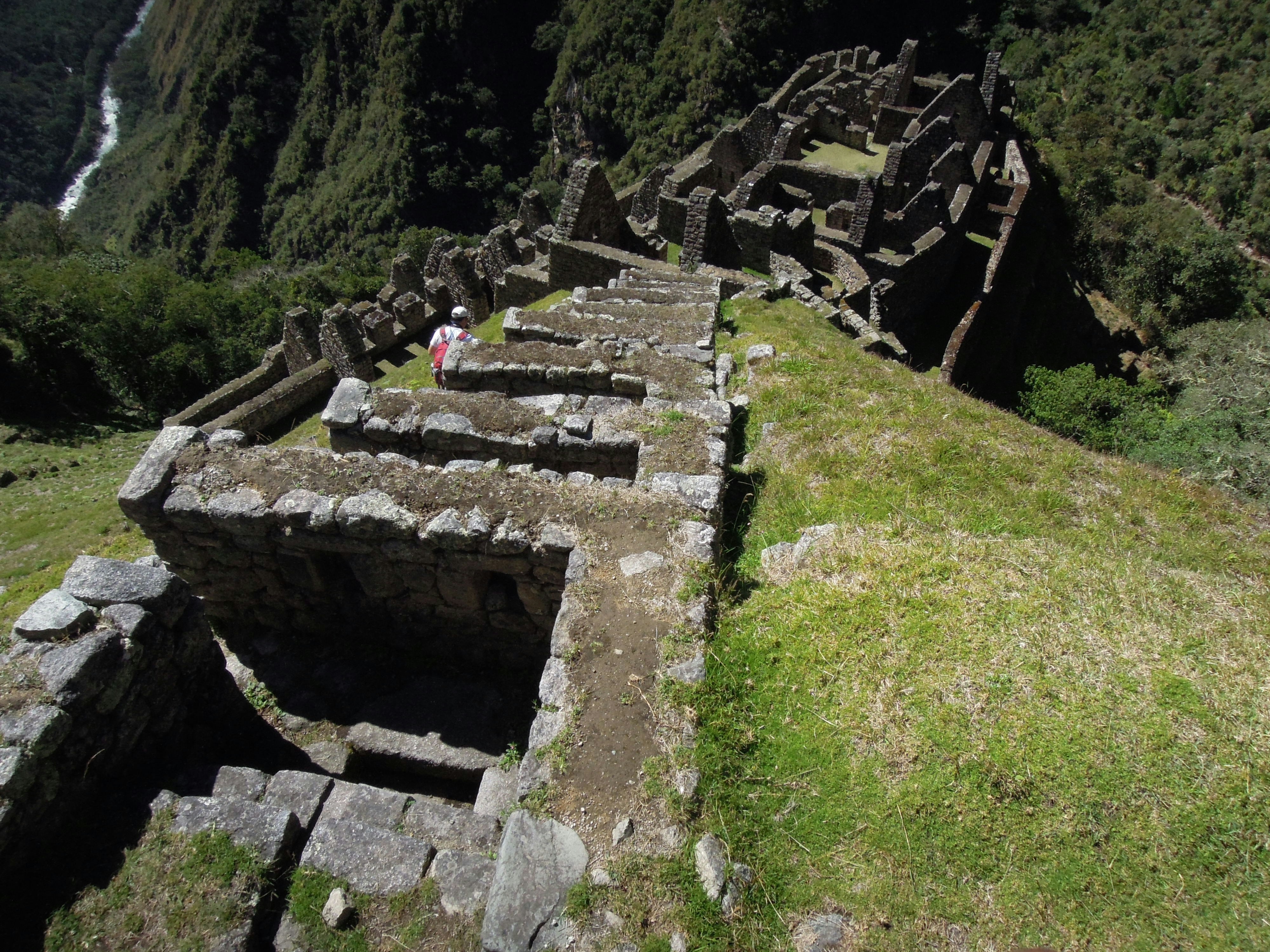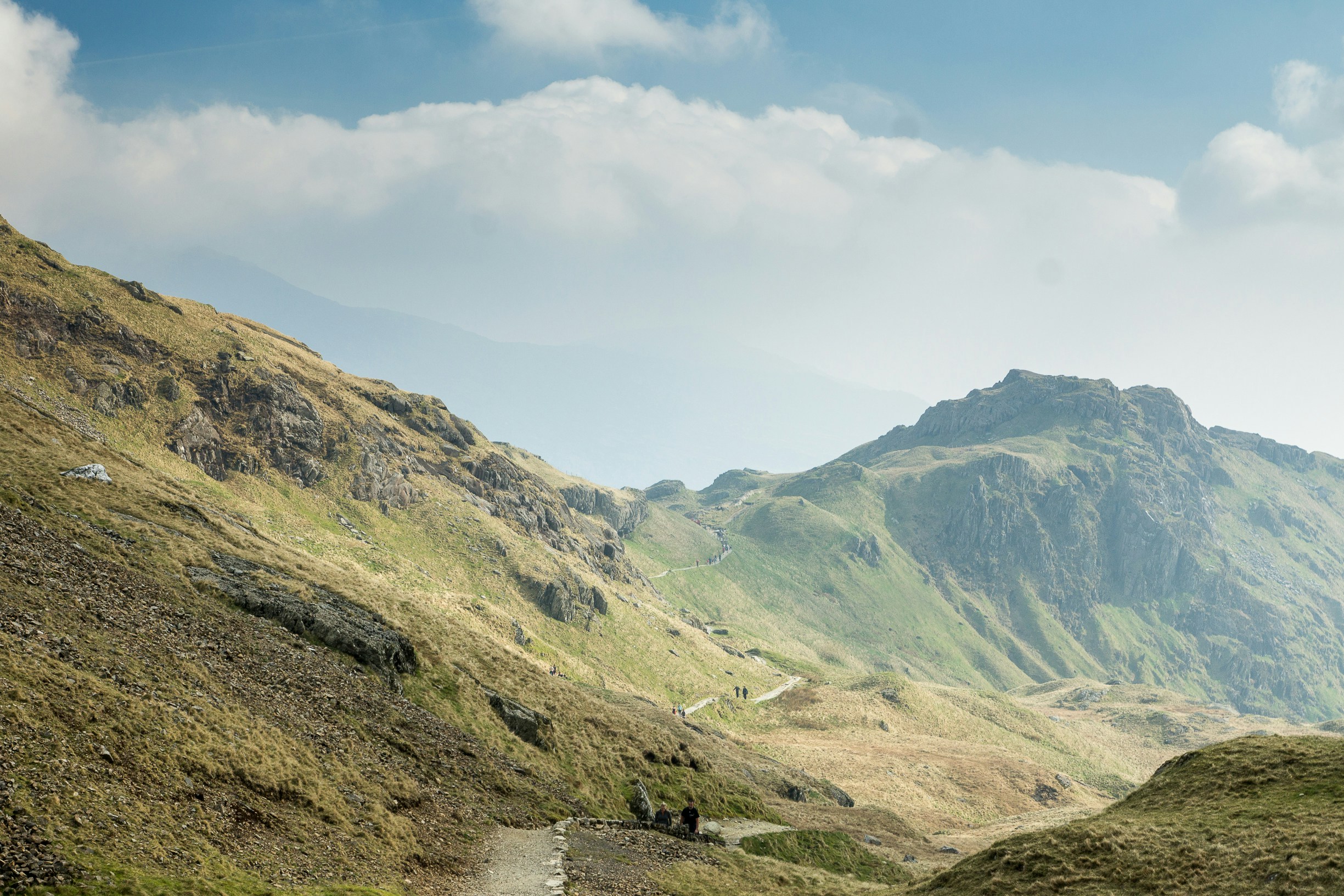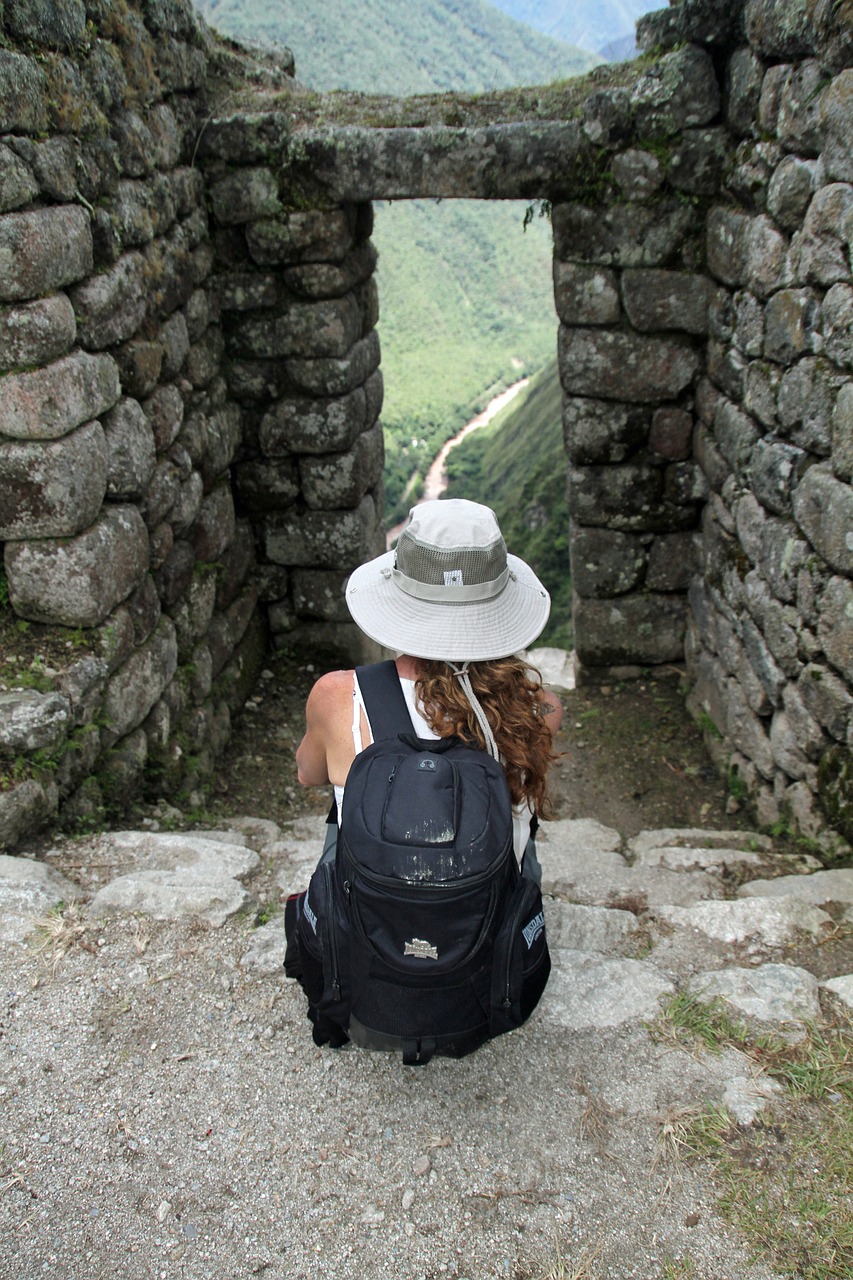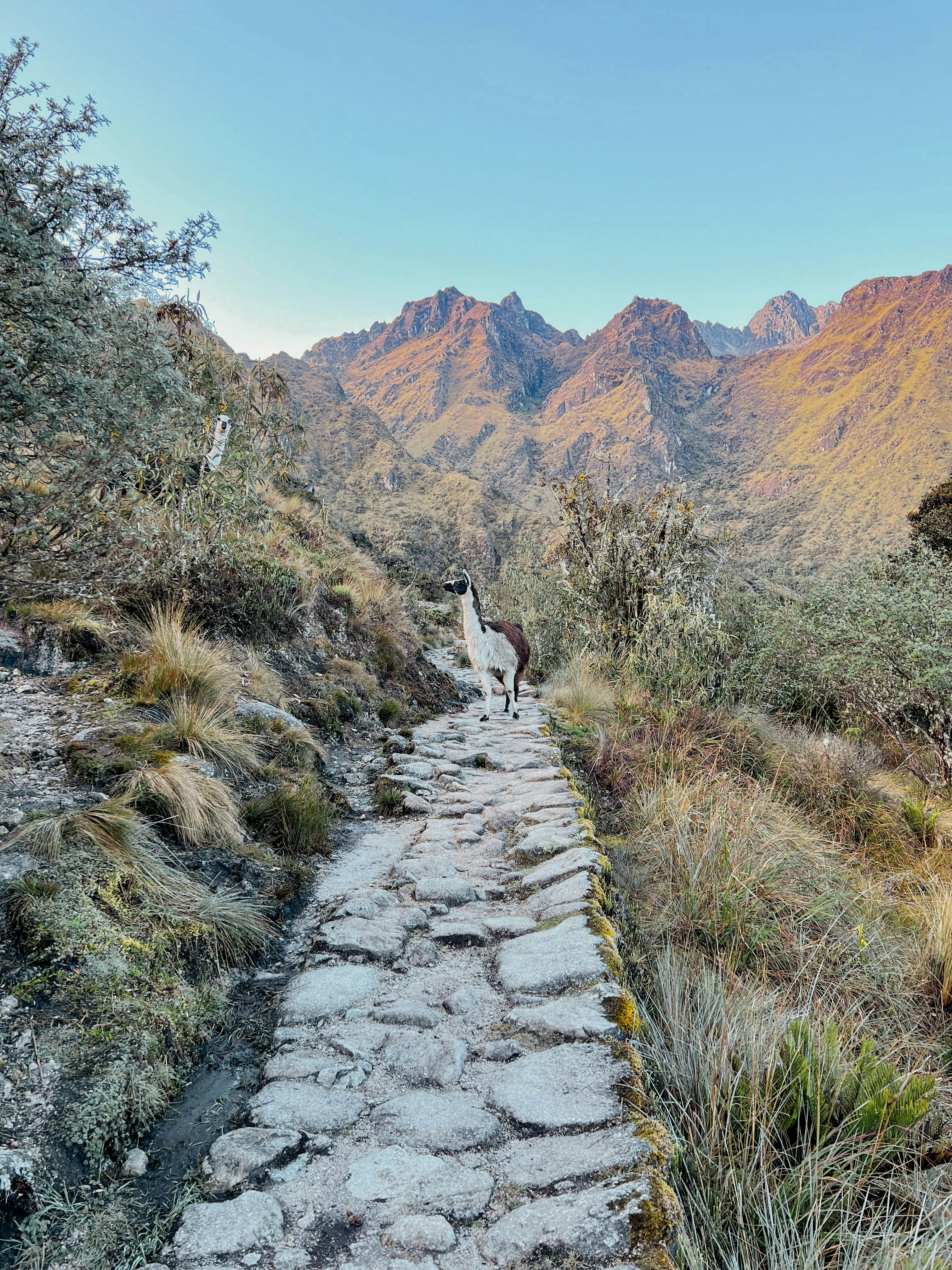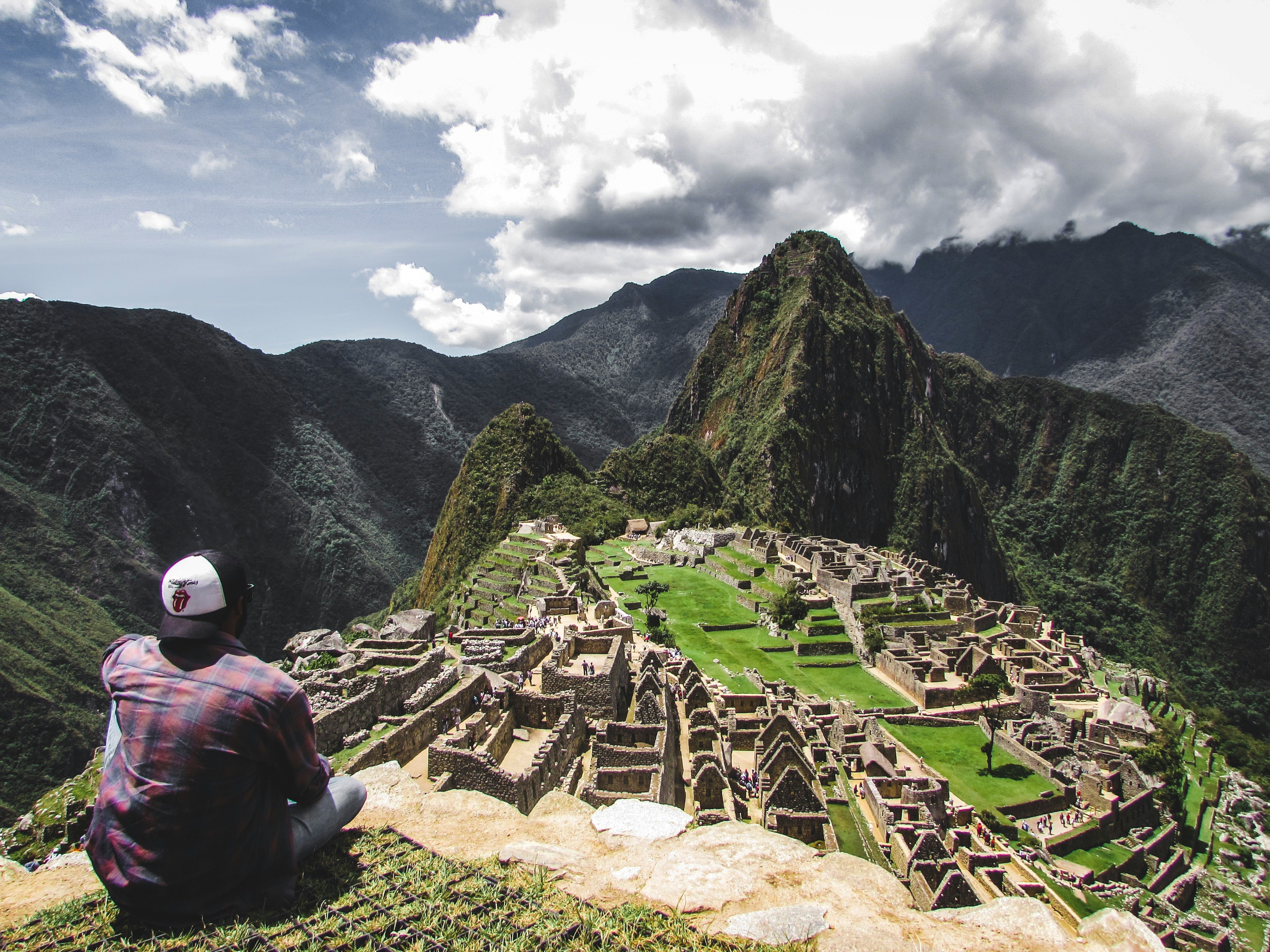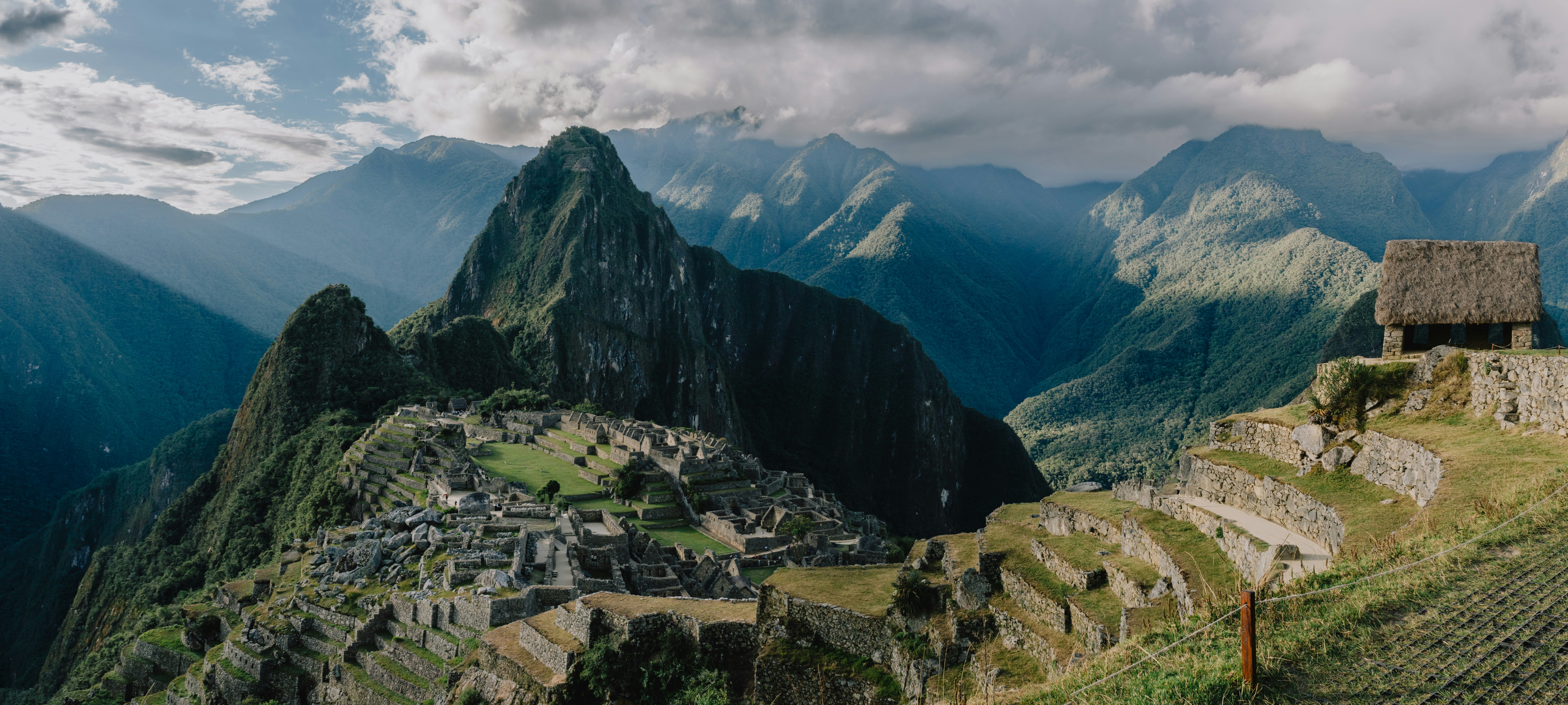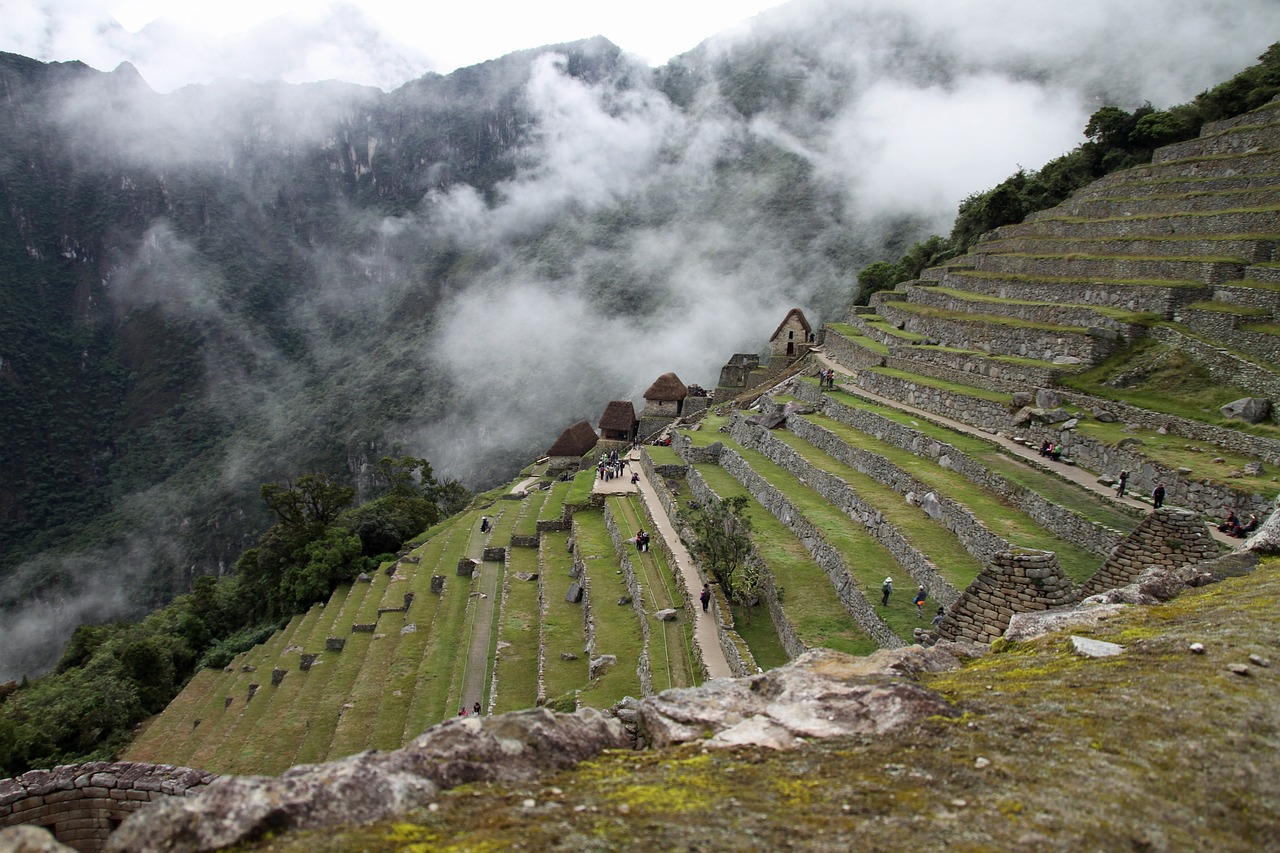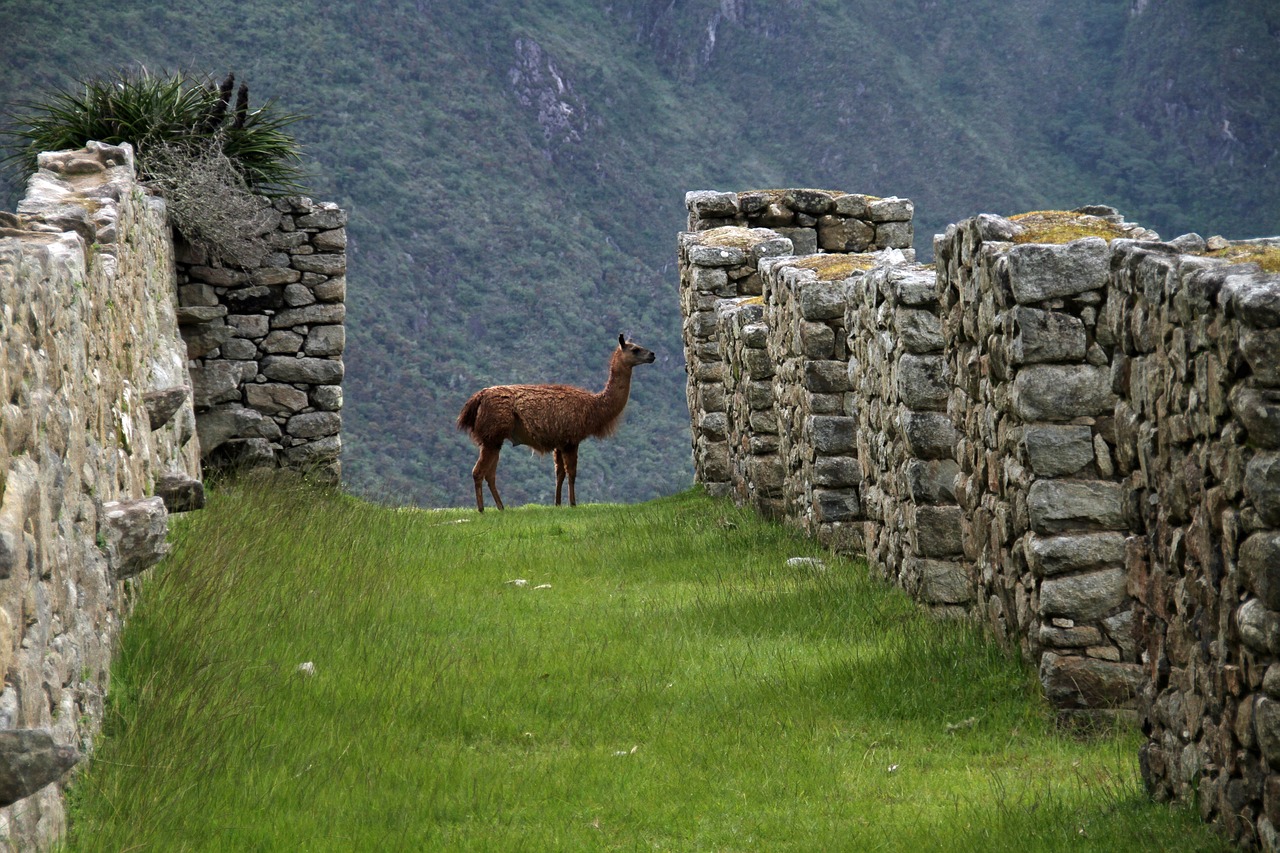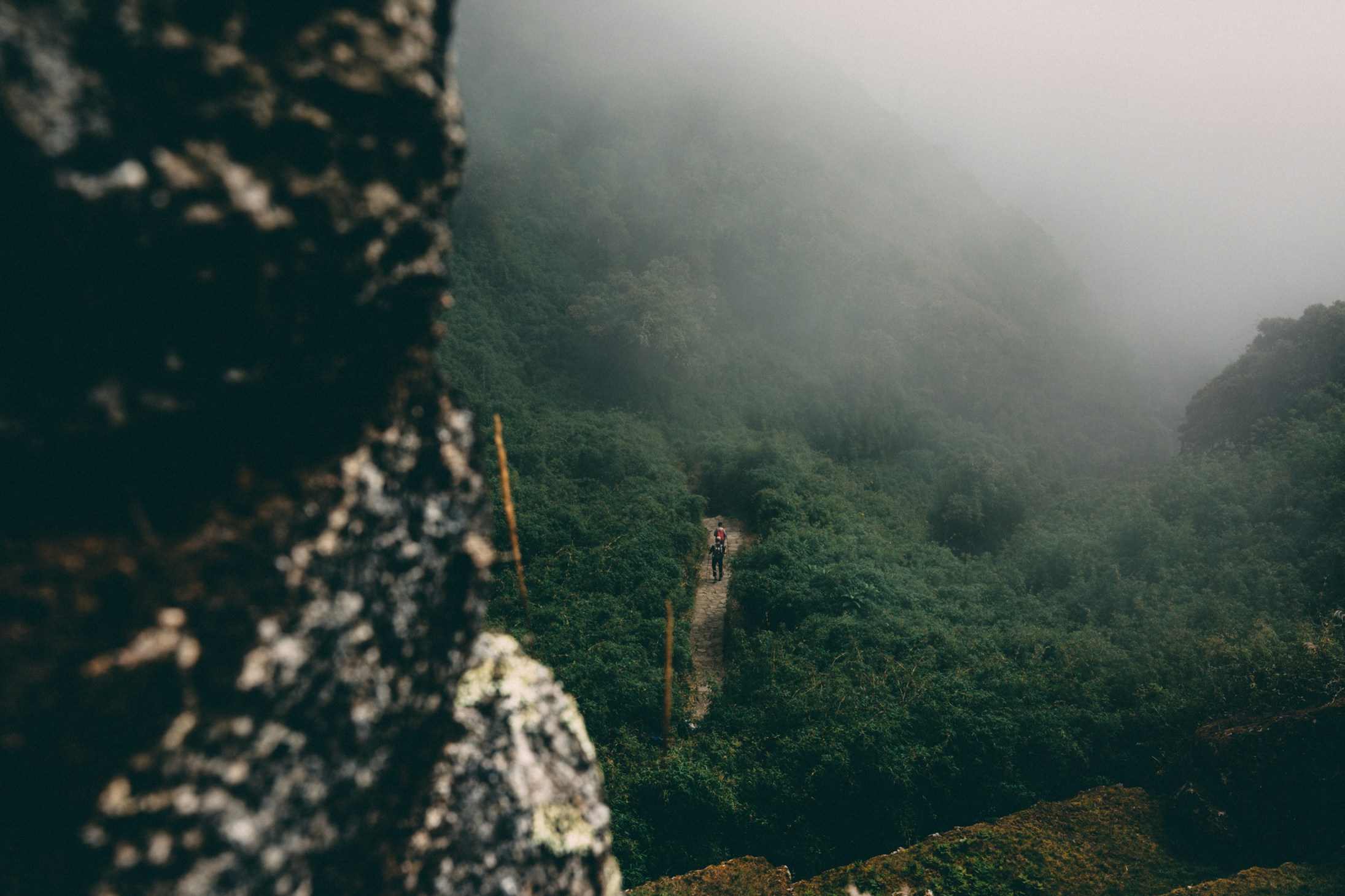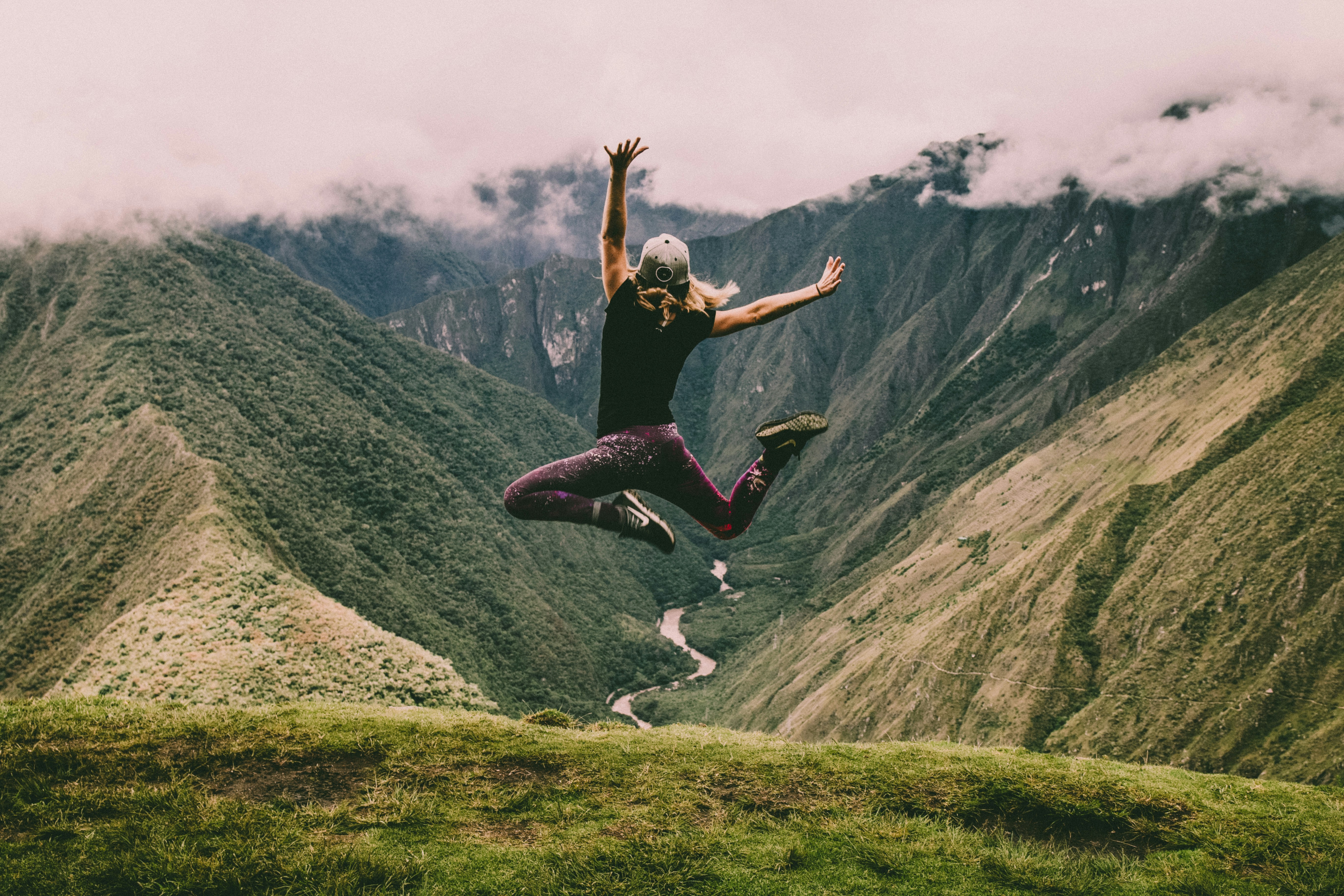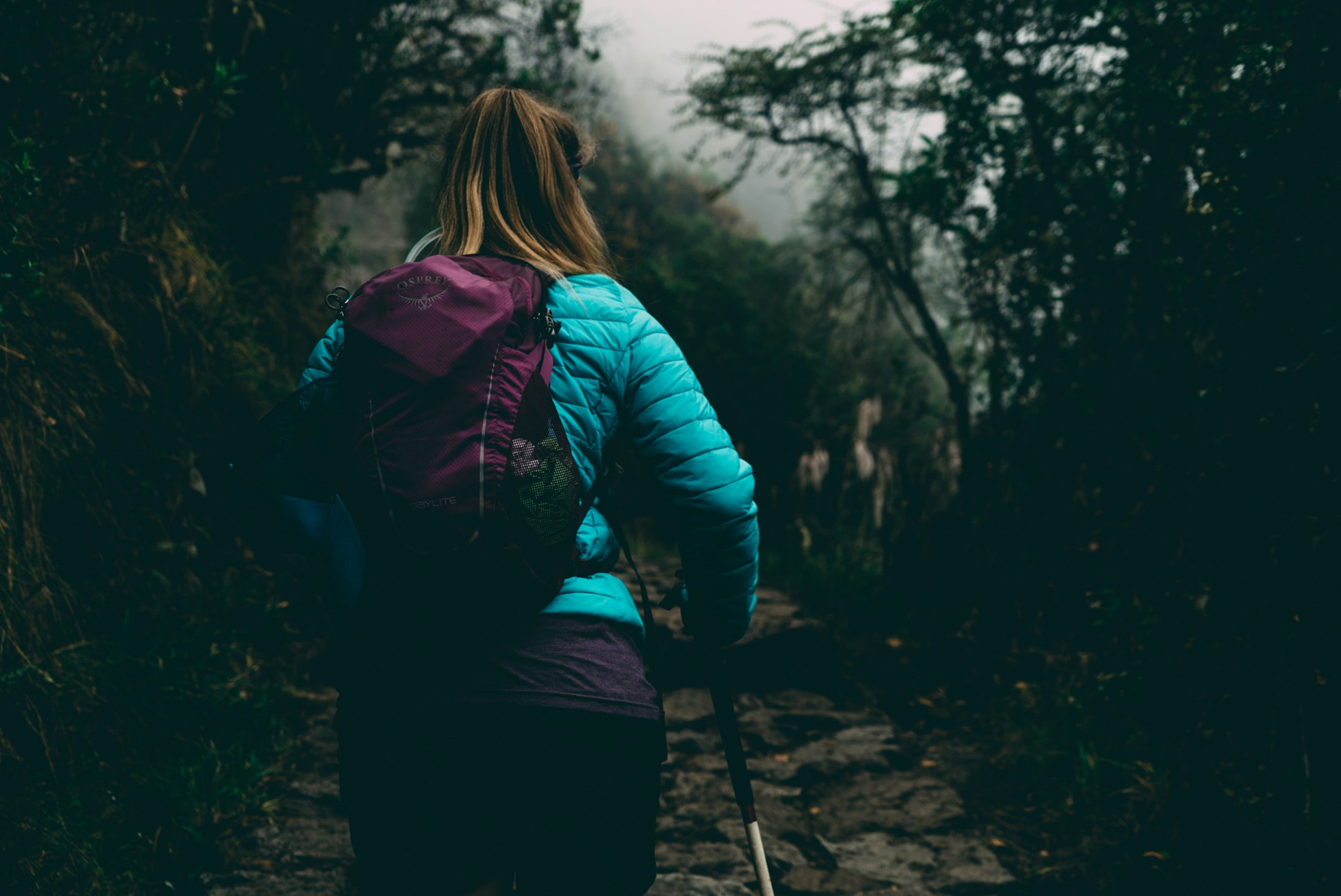Introduction to the Inca Trail
What is the Inca Trail?
The Inca Trail is a renowned hiking route located in the Andes Mountains of Peru, leading to the ancient Inca citadel of Machu Picchu. This iconic trek follows the footsteps of the ancient Inca civilisation, who built the trail as a pilgrimage route to their sacred city. The Inca Trail to Machu Picchu is not just a physical challenge but also a journey through history, offering hikers a chance to explore the fascinating ruins and stunning landscapes of the Peruvian highlands.
The classic Inca Trail route stretches approximately 43 kilometres (26 miles) and typically takes four days to complete. The trail begins in the Sacred Valley, winding through diverse ecosystems, including lush cloud forests and high-altitude alpine tundra. Along the way, hikers encounter numerous Inca ruins, such as Llactapata, Runkurakay, and Phuyupatamarca, which offer a glimpse into the remarkable engineering skills and cultural heritage of the Inca civilisation.
One of the most challenging and rewarding aspects of the Inca Trail trek is the high altitude. The trail reaches its highest point at Dead Woman's Pass, which sits at an elevation of 4,215 metres (13,828 feet) above sea level. Hikers must be prepared for the physical demands of the trek and take necessary precautions to avoid altitude sickness.
The Inca Trail's culmination at Machu Picchu is a moment of pure wonder and accomplishment. As hikers approach the Sun Gate (Inti Punku) on the final day, they are rewarded with their first breathtaking view of the ancient citadel, bathed in the soft light of the rising sun. Exploring the intricate stonework and fascinating history of Machu Picchu is a fitting conclusion to this incredible journey.
Why Hike the Inca Trail?
Hiking the Inca Trail is a once-in-a-lifetime experience that appeals to adventure seekers, history buffs, and nature enthusiasts alike. The trek offers an unparalleled combination of natural beauty, cultural significance, and physical challenge, making it one of the most popular and rewarding hiking routes in the world.
One of the primary reasons to hike the Inca Trail is to immerse oneself in the stunning landscapes of the Peruvian Andes. The trail traverses diverse ecosystems, from dense cloud forests to high-altitude páramo, offering hikers the chance to see a wide variety of flora and fauna. The breathtaking vistas of snow-capped peaks, deep valleys, and distant ruins create an awe-inspiring backdrop for this unforgettable adventure.
Another compelling reason to hike the Inca Trail is to explore the rich history and cultural heritage of the Inca civilisation. The trail passes through numerous Inca ruins, each with its own unique story and significance. Hikers can marvel at the precise stonework, intricate terraces, and sacred sites, gaining a deeper understanding and appreciation for the Inca's remarkable achievements.
Furthermore, completing the Inca Trail trek is a significant personal accomplishment. The physical demands of the high-altitude terrain and the mental challenge of pushing oneself to the limit create a sense of camaraderie and shared experience among hikers. The feeling of reaching Machu Picchu after four days of trekking is an emotional and rewarding moment that will stay with hikers for a lifetime.
Finally, hiking the Inca Trail is an opportunity to disconnect from the modern world and reconnect with nature and oneself. The remote and rugged environment of the trail encourages hikers to embrace a simpler way of life, free from the distractions of technology and the stresses of daily life. This chance to unplug and recharge is a valuable and transformative aspect of the Inca Trail experience.
Planning Your Inca Trail Trek
Booking and Permits
Planning a trek of the Inca Trail requires careful preparation and attention to detail, particularly when it comes to booking and permits. The Peruvian government has implemented strict regulations to protect the trail and its surrounding ecosystem, limiting the number of hikers allowed on the route each day.
To hike the Inca Trail, you must obtain a permit through an authorised tour operator. These permits are released in batches and sell out quickly, especially for the peak trekking season (May to September). It is recommended to book your Inca Trail permit at least six months in advance to secure your desired trekking dates.
When choosing a tour operator for your Inca Trail trek, it is essential to select a reputable company with a proven track record of safety, sustainability, and ethical treatment of its staff. Look for operators that are licensed by the Peruvian government and have experienced, knowledgeable guides who prioritise the well-being of both hikers and the environment.
In addition to your Inca Trail permit, you will need to obtain a valid passport and travel insurance that covers high-altitude trekking. Some tour operators may also require a medical certificate to ensure that you are physically fit to undertake the challenging trek.
It is crucial to be aware of the strict regulations surrounding the Inca Trail permits. Permits are non-transferable and non-refundable, and they are linked to your passport number. If you need to change your passport after booking your permit, you must notify your tour operator immediately to avoid complications.
Physical Preparation and Training
Embarking on the Inca Trail hike requires a good level of physical fitness and preparation. The trek involves long days of hiking at high altitudes, with steep ascents and descents on uneven terrain. To ensure a safe and enjoyable experience, it is essential to start training well in advance of your planned trekking date.
A comprehensive training plan should focus on building cardiovascular endurance, leg strength, and core stability. Engaging in regular aerobic exercises such as hiking, running, cycling, or swimming can help improve your stamina and prepare your body for the demands of the trail. Incorporating strength training exercises, particularly those targeting your legs and core, will help you tackle the steep inclines and uneven surfaces with greater ease.
In addition to physical training, it is crucial to acclimatise to the high altitude before beginning your Inca Trail Hike. Cusco, the gateway city to the trail, sits at an elevation of 3,400 metres (11,200 feet) above sea level. It is recommended to arrive in Cusco at least two to three days before your trek to allow your body time to adjust to the thinner air. During this time, avoid strenuous activities, stay hydrated, and get plenty of rest.
To further prepare for the high-altitude conditions, consider participating in acclimatisation hikes in the Sacred Valley or around Cusco. These shorter hikes will help your body adapt to the lower oxygen levels and give you a taste of what to expect on the Inca Trail.
When training for your Inca Trail Peru trek, it is essential to listen to your body and gradually increase the intensity and duration of your workouts. Be sure to incorporate sufficient rest and recovery time into your training plan to avoid injury and overexertion. If you have any pre-existing medical conditions or concerns, consult with your doctor before embarking on a training program or booking your Inca Trail trek.
By dedicating time and effort to physical preparation and acclimatisation, you will be better equipped to handle the challenges of the Inca Trail and fully immerse yourself in the incredible experience of trekking to Machu Picchu.
The Inca Trail Route and Highlights
Day 1: Cusco to Wayllabamba
The first day of the Inca Trail trek begins with an early morning departure from Cusco, the ancient capital of the Inca Empire. Hikers are transported to the starting point of the trail at Kilometre 82, located in the picturesque Sacred Valley. Before setting off on the journey, hikers will meet their guide and support team, who will accompany them throughout the trek.
The initial part of the trail follows the Urubamba River, offering stunning views of the surrounding mountains and ancient Inca ruins. The first notable site along the route is Llactapata, an Inca archaeological complex featuring terraces, walls, and structures that were once used for agriculture and religious ceremonies. This site provides a fascinating glimpse into the Inca civilisation's advanced engineering and architectural skills.
As hikers continue along the trail, they will pass through small villages and cross the Kusichaca River before beginning a gradual ascent to the first campsite at Wayllabamba, situated at an elevation of 3,000 metres (9,842 feet). The day's hike covers approximately 12 kilometres (7.5 miles) and takes around 5-6 hours to complete, depending on the group's pace.
Throughout the day, hikers will have the opportunity to observe the diverse flora and fauna of the region, including colourful orchids, bromeliads, and various species of birds. The trail passes through lush cloud forests, where the humidity and mist create an enchanting atmosphere.
Upon arriving at the Wayllabamba campsite, hikers can relax and enjoy a well-deserved meal prepared by the talented cooks accompanying the group. The campsite offers stunning views of the surrounding mountains and provides a peaceful setting for hikers to rest and recharge before the challenging second day of the Inca Trail Peru trek.
Day 2: Wayllabamba to Pacamayo
The second day of the Inca Trail is often considered the most challenging, as hikers must conquer the highest pass on the route, known as Dead Woman's Pass (Warmiwañusca). The day begins with a steep ascent through the cloud forest, where the trail becomes increasingly steep and rocky.
As hikers gain elevation, the vegetation begins to change, transitioning from lush forests to high-altitude grasslands and shrubs. The trail continues to climb, passing through the Llulluchapampa Valley and offering breathtaking views of the surrounding peaks, including the impressive Mt. Huayanay.
The ascent to Dead Woman's Pass is a true test of endurance, with the trail reaching an elevation of 4,215 metres (13,828 feet). The steep and rocky path requires careful footing and a steady pace. Hikers are rewarded with stunning panoramic views of the Andes Mountains upon reaching the pass, making the challenging climb well worth the effort.
After a well-deserved rest at the top of the pass, hikers begin the steep descent into the Pacamayo Valley. The trail can be slippery and demanding on the knees, requiring hikers to take their time and watch their step. Along the way, hikers will pass by the ruins of Runkurakay, a small Inca site believed to have served as a watchtower or resting place for messengers.
The day's hike concludes at the Pacamayo campsite, situated at an elevation of 3,600 metres (11,811 feet). This remote and scenic campsite offers a chance for hikers to relax and recover from the day's challenging trek. The total distance covered on day two is approximately 11 kilometres (6.8 miles), with an estimated hiking time of 6-7 hours.
As hikers settle in for the night, they can reflect on the incredible accomplishments of the day and the awe-inspiring beauty of the Andean landscape. The Pacamayo campsite provides a peaceful and serene setting, with the sounds of nearby streams and the occasional distant avalanche lulling hikers to sleep under a starry sky.
Day 3: Pacamayo to Wiñay Wayna
The third day of the Inca Trail trek is a day filled with breathtaking landscapes, fascinating Inca ruins, and a gradual descent into the lush cloud forest. After a challenging second day, hikers can look forward to a more relaxed pace and the opportunity to explore some of the most impressive archaeological sites along the trail.
The day begins with a short climb from the Pacamayo campsite to the ruins of Runkurakay, a circular structure believed to have served as a watchtower or a resting place for Inca messengers. From this vantage point, hikers can enjoy panoramic views of the surrounding mountains and the Pacamayo Valley below.
As the trail continues, hikers will pass through the Inca tunnel, a natural cave formation that was modified by the Incas to create a passageway. The tunnel is a unique feature of the trail and offers a glimpse into the ingenuity of Inca engineering.
The next major highlight of the day is the archaeological site of Sayacmarca, perched atop a steep cliff overlooking the Aobamba Valley. This impressive complex features intricate stone masonry, ceremonial baths, and a series of terraces that were once used for agriculture. The site's strategic location and defensive walls suggest that it may have served as a military outpost or a lookout point.
From Sayacmarca, the trail descends into the cloud forest, where hikers are surrounded by lush vegetation, colorful orchids, and the sounds of tropical birds. The trail passes by several smaller ruins, including Conchamarca, a site believed to have been used for religious ceremonies.
The final major site of the day is Phuyupatamarca, also known as "The Town Above the Clouds." This impressive complex features a series of ceremonial baths, fountains, and agricultural terraces, all constructed with the Incas' signature precision and attention to detail. The site offers stunning views of the surrounding mountains and the Urubamba River far below.
From Phuyupatamarca, the trail descends a series of steep stone steps, passing through a lush bamboo forest and several smaller ruins. Hikers will catch glimpses of the stunning Machu Picchu mountain in the distance, a tantalising preview of the ultimate destination that awaits.
The day's hike concludes at the beautiful Wiñay Wayna campsite, located just a short distance from the ruins of the same name. The campsite is situated in a picturesque setting, surrounded by terraced hills and overlooking the Urubamba River valley. Hikers can take a short walk to explore the Wiñay Wayna ruins, a series of agricultural terraces, fountains, and residential structures that showcase the ingenuity of Inca engineering.
As the sun sets over the Andes, hikers can reflect on the incredible journey they have undertaken and the wealth of history and natural beauty they have witnessed along the way. The anticipation builds for the final day of the trek, which will culminate in the ultimate reward - the arrival at the awe-inspiring citadel of Machu Picchu.
Day three of the Inca Trail offers a perfect balance of natural beauty, archaeological wonders, and a more relaxed pace, allowing hikers to fully immerse themselves in the magic of the Andes and the legacy of the Inca civilisation. With each step, they are walking in the footsteps of the ancient Incas, drawing closer to the ultimate destination that has captured the imagination of people around the world - the majestic Machu Picchu.
Machu Picchu: The Ultimate Destination
Exploring the Citadel
The crowning jewel of the Inca Trail trek is the ancient citadel of Machu Picchu, a UNESCO World Heritage Site and one of the New Seven Wonders of the World. This awe-inspiring city, perched high in the Andes Mountains, is a testament to the architectural genius and sophistication of the Inca civilisation.
Upon reaching Machu Picchu, typically on the fourth day of the Inca Trail hike, hikers have the opportunity to explore the citadel and uncover its many wonders. The city is divided into two main areas: the agricultural sector, characterised by its extensive terraces and the urban sector, which contains the main residential and ceremonial buildings.
One of the most iconic structures in Machu Picchu is the Temple of the Sun, a semicircular building constructed with exquisite stonework. The temple was used for important religious ceremonies and astronomical observations, highlighting the Incas' deep connection to the sun and the cosmos.
Another notable feature is the Intihuatana, a carved rock believed to have served as a sundial or calendar. The precise alignment of this structure with the sun's movements demonstrates the advanced astronomical knowledge possessed by the Incas.
Hikers can also explore the intricate network of fountains, channels, and water features that run through the city. The Inca engineers were masters of water management, and the city's sophisticated hydraulic system is a testament to their skill and ingenuity.
As visitors wander through the narrow streets and plazas of Machu Picchu, they can marvel at the precision and artistry of the Inca stonework. The buildings were constructed using a technique called "ashlar," in which stones were cut and fitted together so tightly that a knife blade cannot be inserted between them. This technique, combined with the use of interlocking shapes and the natural contours of the mountain, has allowed the city to endure for centuries.
Throughout the citadel, hikers can also spot various examples of Inca art and symbolism, such as the carved rock formations resembling the condor, puma, and snake - animals that held sacred significance in Inca mythology.
Machu Picchu's Enduring Legacy
For many hikers, reaching Machu Picchu after days of trekking the challenging Inca Trail is a moment of profound accomplishment and awe. The city's breathtaking setting, surrounded by towering mountain peaks and shrouded in an air of mystery, is an unforgettable sight that leaves a lasting impression on all who witness it.
Beyond its visual splendour, Machu Picchu holds immense historical and cultural significance. The city stands as a testament to the power, ingenuity, and spiritual devotion of the Inca civilisation, which at its height controlled a vast empire stretching across the Andes.
Although the exact purpose of Machu Picchu remains a subject of debate among scholars, it is clear that the city held great importance to the Incas. Some believe it served as a royal retreat for Inca emperors, while others suggest it was a sacred religious centre or a strategic military outpost.
The fact that Machu Picchu was never discovered and plundered by the Spanish conquistadors adds to its allure and mystery. The city remained largely unknown to the outside world until American historian Hiram Bingham brought it to international attention in 1911.
Today, Machu Picchu attracts visitors from around the globe who come to marvel at its beauty and ponder its enigmatic past. The city has become an icon of Peruvian tourism and a symbol of the enduring legacy of the Inca civilisation.
As hikers explore the ruins and take in the panoramic views from this incredible mountaintop citadel, they become part of a long and storied history - a history that continues to captivate the imagination of people worldwide.
The experience of trekking the Inca Trail and reaching Machu Picchu is not only a physical journey but also a cultural and spiritual one. It is a chance to connect with an ancient civilisation, to marvel at their achievements, and to reflect on the enduring human spirit that has left such a remarkable imprint on this sacred landscape.
Accommodations and Amenities on the Inca Trail
Campsites and Sleeping Arrangements
During the Inca Trail hike, hikers will spend their nights at designated campsites along the route. These campsites are strategically located to provide a comfortable and convenient resting place after each day's trek. While the accommodations are basic, they offer a unique and immersive experience in the heart of the Andes Mountains.
Most tour operators provide high-quality tents for their hikers, typically designed to accommodate two people each. These tents are spacious enough to fit two sleeping bags and offer protection from the elements. The tents are set up by the support staff before hikers arrive at each campsite, allowing them to rest and settle in quickly.
In addition to the tents, hikers will be provided with sleeping mats or inflatable mattresses to offer insulation and comfort from the ground. However, it is essential for hikers to bring their own warm sleeping bags, as nighttime temperatures can drop significantly, especially at higher elevations.
The campsites themselves are chosen for their scenic locations and proximity to water sources. Many of the campsites offer stunning views of the surrounding mountains, valleys, and ancient ruins, providing a breathtaking backdrop for the evening's rest. Some campsites, such as Wiñay Wayna, even feature ancient Inca terraces and structures, allowing hikers to camp amidst historical sites.
Toilet facilities at the campsites are basic but functional. Most campsites have designated toilet tents or pit toilets, which are regularly maintained by the support staff. Hikers should bring their own toilet paper and hand sanitiser, as these are not always provided.
While the accommodations along the Inca Trail are rustic, they provide a comfortable and memorable experience for hikers. Falling asleep under the stars, surrounded by the beauty of the Andes and the rich history of the Inca civilisation, is an integral part of the Inca Trail experience that will stay with hikers long after the trek is complete.
Food and Dining on the Trail
One of the most surprising and delightful aspects of the Inca Trail hike is the quality and variety of meals provided throughout the trek. Despite the remote location and basic cooking facilities, the talented cooks who accompany hikers on the trail create culinary delights that rival those found in restaurants.
Most tour operators employ experienced chefs who specialise in preparing delicious and nutritious meals using fresh, locally-sourced ingredients. The cooks take great pride in their work, ensuring that hikers are well-fed and energised for the challenging trek ahead.
Meals on the Inca Trail typically include breakfast, lunch, dinner, and snacks. Breakfast often features a hearty spread of pancakes, oatmeal, eggs, bread, and fresh fruit, accompanied by hot tea or coffee. Lunch and dinner may include a variety of dishes such as soups, stews, grilled meats, vegetarian options, rice, and potatoes. The cooks are skilled at accommodating various dietary restrictions, such as vegetarian, vegan, or gluten-free, with prior notice.
Hikers will enjoy their meals in a designated dining tent, which serves as a communal space for the group to gather, eat, and socialise. The dining tent provides a warm and sheltered area, offering respite from the elements and a chance to relax and connect with fellow hikers.
In addition to the main meals, the cooks provide hikers with snacks and hot drinks throughout the day to keep energy levels high. These may include fresh fruit, trail mix, biscuits, and coca tea, a traditional Andean herbal tea known for its energising properties and ability to alleviate altitude sickness symptoms.
The food on the Inca Trail not only sustains hikers throughout the challenging trek but also serves as a highlight of the experience. The delicious and varied meals provide a comforting and satisfying end to each day's adventures, allowing hikers to refuel and recharge for the next day's journey to Machu Picchu.
Eco-Tourism and Sustainable Practices on the Inca Trail
Environmental Conservation Efforts
The Inca Trail is not only a popular trekking route but also an important ecological and cultural treasure. As the number of visitors to the trail has grown over the years, so has the need for effective environmental conservation efforts to protect the delicate ecosystems and ancient ruins along the route.
One of the most significant steps taken to promote sustainability on the Inca Trail is the implementation of strict regulations by the Peruvian government. These regulations limit the number of hikers allowed on the trail each day to 500, including guides and support staff. By controlling the flow of visitors, the authorities aim to minimise the impact on the environment and ensure that the trail remains pristine for future generations.
In addition to limiting hiker numbers, the government has also implemented a system of rotating campsites. This approach allows certain areas of the trail to rest and regenerate while hikers use alternative sites. The rotation system helps to prevent overuse and degradation of the natural environment, promoting a more sustainable approach to tourism.
Tour operators and hikers are required to adhere to a set of guidelines designed to minimise their environmental impact. These guidelines include proper waste management, with all trash generated during the trek being carried out and disposed of responsibly. Hikers are encouraged to use reusable water bottles and to avoid bringing single-use plastics on the trail.
The use of eco-friendly and biodegradable products, such as soaps and toiletries, is also promoted to reduce the impact on the trail's delicate water sources. Hikers are advised to stay on the designated path to minimise damage to the surrounding flora and to refrain from removing any plants, rocks, or artifacts from the trail.
Many tour operators have also taken proactive steps to support environmental conservation efforts. Some companies have implemented carbon offset programs, where they invest in reforestation projects or renewable energy initiatives to mitigate the carbon footprint of their operations. Others have partnered with local communities to promote sustainable agriculture and agroforestry practices in the regions surrounding the Inca Trail.
Supporting Local Communities
Eco-tourism on the Inca Trail extends beyond environmental conservation to include the support and empowerment of local communities. The trail passes through several small villages and rural areas, where tourism has become an important source of income and employment.
Many tour operators work closely with these communities, hiring local guides, porters, and cooks to support their trekking operations. By providing job opportunities and fair wages, these companies help to improve the livelihoods of local residents and promote economic development in the region.
Some operators go beyond employment and actively invest in community development projects. These initiatives may include building schools, supporting healthcare facilities, or providing training and education programs to help locals acquire new skills and knowledge. By contributing to the long-term well-being of these communities, tour operators demonstrate their commitment to sustainable and responsible tourism practices.
Hikers can also play a role in supporting local communities during their Inca Trail trek. One way to do this is by purchasing locally-made handicrafts and souvenirs, which helps to support traditional artisans and their families. Many communities along the trail have small markets or shops where hikers can buy authentic, handmade items such as textiles, pottery, and jewellery.
Another way hikers can support local communities is by being respectful and mindful of local customs and traditions. This includes dressing modestly, asking permission before taking photos of people or their homes, and being open to learning about the local way of life. By fostering a sense of cultural exchange and understanding, hikers can contribute to a more positive and mutually beneficial relationship between tourists and local communities.
The promotion of eco-tourism and sustainable practices on the Inca Trail is essential for preserving the natural and cultural heritage of the region while also supporting the well-being of local communities. By working together, government authorities, tour operators, and hikers can ensure that the Inca Trail remains a cherished and protected destination for generations to come.
Cultural Significance and History of the Inca Trail
The Inca Empire and the Sacred Valley
The Inca Trail is not merely a picturesque hiking route; it is a testament to the rich history and cultural significance of the Inca Empire, one of the largest and most advanced civilisations in pre-Columbian America. The trail, which leads to the awe-inspiring citadel of Machu Picchu, was once part of an extensive network of roads that connected the far reaches of the empire, facilitating trade, communication, and the movement of armies.
At its height in the 15th and 16th centuries, the Inca Empire stretched across the western coast of South America, encompassing parts of present-day Peru, Bolivia, Ecuador, Chile, and Argentina. The Incas were renowned for their sophisticated engineering, agricultural techniques, and intricate stone masonry, as evidenced by the numerous ruins and monuments that dot the Sacred Valley and the Inca Trail.
The Sacred Valley, located in the heart of the Inca Empire, was a region of great spiritual and cultural importance. The valley was believed to be the birthplace of the Inca civilisation and was home to many important religious sites and ceremonies. The Incas revered the natural world, and the mountains, rivers, and caves of the Sacred Valley were considered sacred and imbued with spiritual power.
Along the Inca Trail, hikers can witness the remnants of this fascinating civilisation, including ancient agricultural terraces, fortresses, and temples. Sites such as Llactapata, Runkurakay, and Phuyupatamarca offer a glimpse into the daily life, religious practices, and architectural prowess of the Incas.
The trail itself was not just a means of transportation but also a pilgrimage route. The Incas believed that by walking the trail and visiting the sacred sites along the way, they could connect with their gods and ancestors, seeking blessings and guidance. This spiritual journey culminated at Machu Picchu, the mysterious citadel perched high in the Andes, which served as a centre of religious and astronomical significance.
The Legacy of the Inca Trail
The Inca Trail and Machu Picchu have captured the imagination of people around the world, drawing thousands of visitors each year who come to marvel at the ingenuity and beauty of the Inca civilisation. However, the cultural significance of these sites extends far beyond their appeal as tourist destinations.
For the indigenous communities of the Andes, particularly the Quechua people who are the direct descendants of the Incas, the Inca Trail and its associated sites hold deep spiritual and cultural meaning. Many of these communities maintain a strong connection to their ancestral lands and continue to practice traditional ceremonies and rituals that honour the sacred landscape.
In recent years, there has been a growing recognition of the importance of preserving and protecting the cultural heritage of the Inca Trail and the Sacred Valley. The Peruvian government, in collaboration with UNESCO and local communities, has implemented various measures to safeguard these sites and promote responsible tourism practices.
Efforts have been made to involve local communities in the management and interpretation of the Inca Trail and its associated sites, ensuring that their voices and perspectives are heard and respected. This inclusive approach not only helps to preserve the cultural integrity of the region but also provides valuable opportunities for economic development and the transmission of traditional knowledge to younger generations.
For visitors to the Inca Trail, understanding and appreciating the cultural significance of the route and its monuments is an essential part of the trekking experience. By learning about the history, beliefs, and customs of the Inca civilisation, hikers can gain a deeper respect for the incredible achievements of this ancient society and the enduring legacy they have left behind.
As the Inca Trail continues to inspire and captivate people from all walks of life, it serves as a powerful reminder of the importance of preserving and celebrating our shared cultural heritage. By treading lightly and respectfully on this ancient path, we can ensure that the stories, legends, and wisdom of the Incas continue to resonate for generations to come.
Physical Challenges and Safety Considerations on the Inca Trail
Altitude and Acclimatisation
One of the most significant physical challenges faced by hikers on the Inca Trail is the high altitude. The trail reaches its highest point at Dead Woman's Pass, which stands at an impressive 4,215 metres (13,828 feet) above sea level. At these elevations, the air is thinner, containing less oxygen, which can lead to altitude sickness.
Altitude sickness, also known as acute mountain sickness (AMS), can cause symptoms such as headaches, nausea, fatigue, shortness of breath, and difficulty sleeping. In severe cases, it can lead to more serious conditions like high-altitude pulmonary edema (HAPE) or high-altitude cerebral edema (HACE), which require immediate medical attention.
To mitigate the risk of altitude sickness, proper acclimatisation is crucial. It is recommended that hikers spend at least two days in Cusco, which is situated at 3,400 metres (11,155 feet), before embarking on the Inca Trail trek. During this time, hikers should rest, stay hydrated, and avoid alcohol and excessive physical exertion.
On the trail, hikers should ascend gradually, allowing their bodies time to adjust to the increasing altitude. Taking regular breaks, staying hydrated, and listening to their bodies are essential for managing the physical challenges posed by the high altitude. Some hikers may also benefit from taking altitude sickness medication, such as acetazolamide, under the guidance of a medical professional.
It is essential for hikers to be aware of the signs and symptoms of altitude sickness and to inform their guide immediately if they experience any discomfort. In some cases, the best course of action may be to descend to a lower altitude to alleviate symptoms and prevent further complications.
Terrain and Weather Conditions
In addition to the high altitude, the Inca Trail's challenging terrain and variable weather conditions can also pose physical challenges for hikers. The trail traverses through diverse landscapes, including dense cloud forests, high-altitude alpine tundra, and steep mountain passes.
The trail itself can be narrow, rocky, and uneven, with numerous steep ascents and descents. Hikers must navigate stone steps, which can become slippery when wet, and traverse exposed sections with steep drop-offs. The terrain requires hikers to have a good level of physical fitness, stability, and surefootedness.
Weather conditions on the Inca Trail can be unpredictable and change rapidly. During the dry season (May to September), temperatures can range from hot and sunny during the day to near-freezing at night, especially at higher elevations. In the rainy season (November to April), hikers can expect frequent rainfall, which can make the trail muddy and more challenging to navigate.
To cope with the varying terrain and weather conditions, hikers should come prepared with appropriate gear, including sturdy hiking boots with good traction, trekking poles for added stability, and layers of breathable, moisture-wicking clothing. Waterproof jackets and pants are essential for protecting against rain and cold winds.
Hikers should also be prepared for intense sun exposure, particularly at high altitudes where the atmosphere is thinner. Wearing a hat, sunglasses, and applying high-SPF sunscreen regularly can help prevent sunburn and protect against the harmful effects of UV radiation.
It is crucial for hikers to maintain a steady and comfortable pace on the trail, taking regular breaks to rest, hydrate, and refuel. Overexertion can lead to exhaustion, dehydration, and a higher risk of injury. Hikers should also be aware of their surroundings and watch their step to avoid tripping or falling on the uneven terrain.
By understanding the physical challenges posed by the Inca Trail's altitude, terrain, and weather conditions, and by coming prepared with the appropriate gear, fitness, and mindset, hikers can safely and successfully navigate this incredible trekking route to Machu Picchu.
Related Articles

Let us know you agree to cookies
We use marketing, analytical and functional cookies as well as similar technologies to give you the best experience. Third parties, including social media platforms, often place tracking cookies on our site to show you personalised adverts outside of our website.
We store your cookie preferences for two years and you can edit your preferences via ‘manage cookies’ or through the cookie policy at the bottom of every page. For more information, please see our cookie policy.
